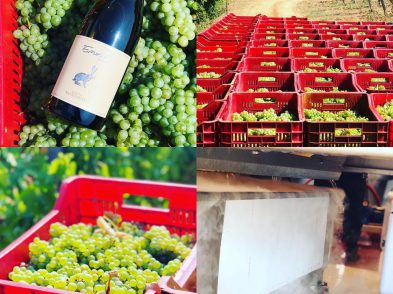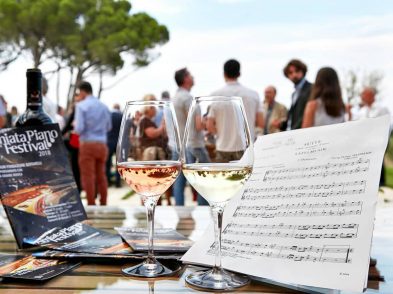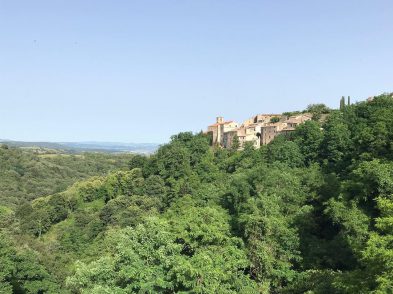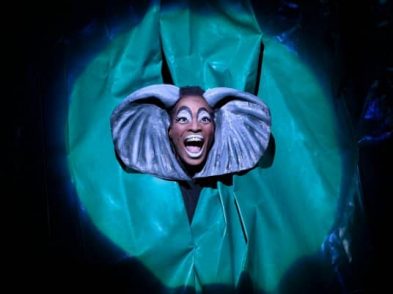The traditional low season in the Maremma offers a moment for embracing, rather than escaping, the cold and the customs that come along with it. With winter in full swing, the Maremma in Tuscany’s south has fallen into a fitful and satisfied hibernation. With months before the tourist wave returns and no one to impress, the new year’s festivities are quiet: think the simple provincial pleasures of roasted chestnuts and rounds of Maremma Amara and other folk songs. It is a time of year few outsiders think to experience in one of the most authentic corners of Tuscany.

My tour of a Maremman winter starts at the Saturnia hot springs, nearly three hours by car from Florence. As any Maremman nonno will tell you, these springs are the gates of hell, torn open by Saturn’s thunderbolt as punishment for man’s decadence and sin. The dire legend proves an impotent deterrent: thousands of visitors flock to the hot springs every year, just as they have done since the Roman Empire.
Named in Lonely Planet’s Top 20 European hot springs, a dip in the pools of the Cascate del Mulino is free. These 37°C pools have formed naturally over the centuries, carved into the travertine rock by the water that flows from a spectacular waterfall. Saturnia’s hot springs are never truly empty, but in the winter months you can unwind in the warm water without elbowing your neighbour in the face.
It takes a certain amount of courage to strip down to your bathing suit in the cold weather, but once you’re in the water, the experience is intoxicating and the view of the Tuscan countryside through plumes of steam unforgettable.
From relaxation and rigorous exercise. The Maremma is extremely popular with winter cyclists. Unless you have the stamina of an Olympian, battling the province’s 35 cycling tracks in the summer heat can prove painful. Winter provides a pleasant opportunity, however, with mild temperatures throughout most of the province, allowing one to enjoy pedalling the open spaces, sparsely trafficked roads and dewy fields.
The Maremma’s provincial government has its own cycling website (cicloturismoinmaremma.it), where you can plan your journey and download route maps. Bikes can be rented for as little as 10 euro (ask for information at the local tourist office). For those who prefer to ride with a group, companies such as Maremma in Bici organise tours (maremmainbici.it).
Another way to enjoy the outdoors is by pulling on a pair of hiking boots and exploring the Parco della Maremma. This beautiful nature park encapsulates the Maremman landscape, from its beachside scenery to its swamps and forest terrain. In winter, one may spy a denizen of the park that is heading for extinction: the buttero or Maremman cowboy. In centuries past, boys would grow up with dreams of rearing the local steer, the vacca maremmana. It was a hard and lonely job, but one that took the cowboy all over the area in search of pastures for the vacca maremmana (which, of course, is leaner, tougher and gamier than its pen-raised cousin). But local farms are finding it increasingly hard to compete with the demand for tender and cheap cuts of beef. The lucky visitor will probably catch a glimpse of the vacche maremmane with their distinctively curved horns as they return to the Parco della Maremma to graze for winter. Their butteri are harder to spot. One must get up before the sun rises to see them working in their large brimmed hats and velvet jackets, wielding a mazzarella, a curved rod used to herd their animals.
The Azienda Regionale Agricola di Alberese, near Grosseto, runs horseback tours for those who would like to see the butteri in action. It takes skill to be a buttero as everything from dressing in the morning to controlling the steer is done with centuries-old tradition and grace.
Working alongside these horsemen are the Maremma’s farmers and vintners. For them, winter is a time for family and rest. Evenings spent around the fireside sharing stories or warming themselves with a glass of red wine.
On March 19, Pitigliano celebrates its pagan and cultura contadina (peasant roots) in a fire show magnificent enough to ward away the ghosts of winter. Every year, a gigantic sharp-toothed and angry-eyed puppet known as l’invernacciu (in local dialect) is burned in an arrivederci to the cold and an auspicious wish for a good spring harvest. La Torciata di San Giuseppe, as the festival is called, is the symbolic end of hibernation for the Maremma. It welcomes the start of a new season with all its new beauty and pleasures.
For more about the festival, visit www.comune.pitigliano.gr.it (Italian only).







